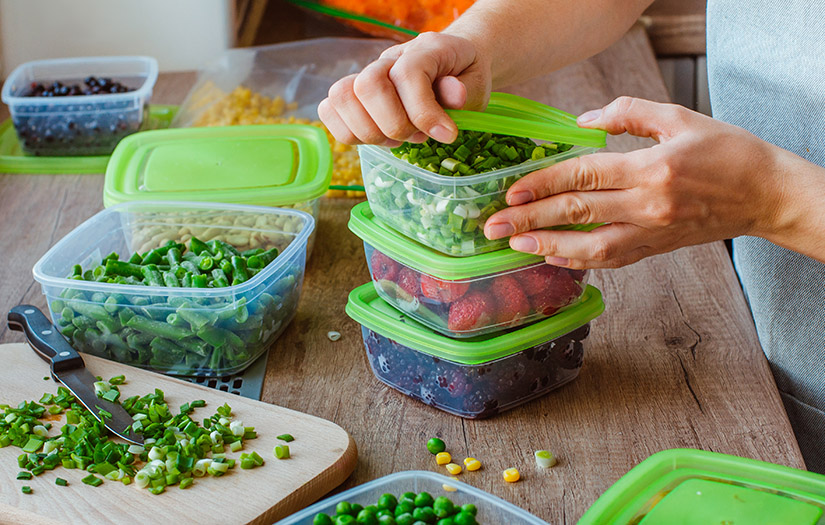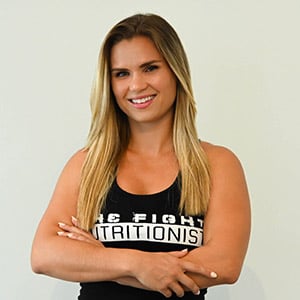When it comes to embarking on a weight loss journey, or even if you’re looking to make some minor changes in your diet and create more stability and consistency, planning ahead is always going to be helpful! Remember, what will work best for you and your schedule will make you successful long term.
Meal prepping is one great way to stick to a plan when you’re trying to lose weight. It will help control caloric intake, provide more structure within your day to keep you on track with your goals and eliminate the “guesswork” of deciding what your next meal should be.
The principles discussed in this blog post have significant carryover with the NASM-WLS course, the NASM Weight Loss Coach, and the Nutrition Coach program. If you want a handy tool to keep you on track with your weight loss journey, check out the NASM calorie calculator.
Is Meal Prepping Good for Weight Loss?
When it comes to weight loss, consuming a meal every 3-4 hours is the most effective way to create a stable metabolism and keep the body in an “anabolic state." Anabolic is a term used to describe a state of building. The opposite would be “catabolic” or a state of breakdown.
Research has shown that in terms of muscle protein synthesis, to stay in a state of building, the body needs a rich source of protein about every 3-4 hours. Beyond this time, your body starts to break down muscle (both proteins and glycogen - the storage form of carbohydrates in your muscles) to keep the body functioning. Any longer and your body will start releasing hormones that stimulate feelings of hunger.
When they go for extended periods without eating, they tend to overconsume food at their next meal for most individuals. So meal prepping can be a great way to have food ahead of time to ensure you’re consuming a nutrient-dense meal at the appropriate time to ensure optimal results.
Since weight loss occurs when you expend more calories than you consume, it’s essential to be mindful of caloric intake. Meal prepping allows much more control over what you put in your body (whether you buy from a service or prep yourself) compared to eating out at restaurants where it’s almost impossible to know the servings of each ingredient used in a dish.
Read also: How to Cut Weight Effectively
Simple 7-Day Meal Prep Plan
To give you a snapshot of a sample 7-day meal prep plan, see the attached PDF and get started!
Should You Rely on Meal Delivery Services?
But what’s the most effective way to meal prep? Is it better to batch cook & portion meals into containers on your own or use a delivery service? The answer is whatever is going to be easiest for you!
If prepping your meals, a good rule of thumb is to ensure each meal has 3-4oz of protein, an equal or double portion of starchy carbohydrates, and an equal or double amount of fibrous vegetables. However, meal prep delivery services can save you time cooking and provide you with pre-portioned, macronutrient balanced meals!
Meal prep services are also much cheaper than going out to eat (most average $7-$10/meal) and are fully transparent with ingredients, calories, and macronutrients so you can trust what you are getting.
Where do Cheat Meals Factor in?
How about cheat meals? When it comes to weight loss, people often cut out their favorite foods and desserts to create a calorie deficit since sweets and fried foods can add unhealthy and unnecessary calories. However, when these foods are overly restricted, it can lead to overconsumption of these items later on and inhibit weight loss.
So, the best way to prevent over-indulgence is to not overly restrict yourself when it comes to cheat meals. To achieve successful and long-term weight loss, it’s essential to learn how to incorporate your favorite foods in moderation so cheat meals don’t discourage you and lead to feelings of failure from your “diet” you are trying to follow. The best way to factor in cheat meals is to:
1. Do so in moderation. If you desire pizza for dinner with friends, limit yourself to 1-2 slices and order a large side salad to add more fiber and volume to the meal. Remember, vegetables are very filling for a low calorie cost! Or, if you have a sweet tooth, allow yourself one small chocolate or cookie every day with one meal. Allowing yourself a small treat every day will prevent you from overindulging on sweets later.
2. Be mindful & plan ahead. For example, if you want dessert after dinner, perhaps fill your plate with more protein and fibrous vegetables instead of starchy carbohydrates since your dessert will be higher in sugar.
3. Do not feel guilty about enjoying your “cheat meal." Feelings of guilt about eating foods you enjoy can develop bad relationships with food and sabotage your weight loss success.
Overall, the most effective meal plan is one you will be able to follow. If a meal plan is overly restrictive or doesn’t allow for flexibility in foods you enjoy eating, you won’t be successful at maintaining weight loss long term.

















